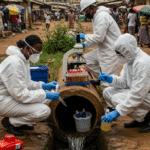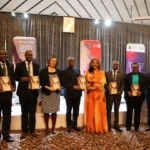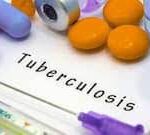The Africa Centres for Disease Control and Prevention (Africa CDC) has issued a stark warning: antimicrobial resistance (AMR) is becoming a more significant threat to the African continent than HIV-AIDS, tuberculosis, and malaria. This alarming conclusion comes from a new report that highlights the escalating crisis of drug-resistant infections and their devastating impact on public health across Africa.
AMR occurs when microorganisms, such as bacteria, viruses, fungi, and parasites, evolve to withstand antimicrobial drugs, rendering treatments ineffective. This resistance is primarily driven by the misuse and overuse of antibiotics in healthcare, agriculture, and food systems. As a result, infections become harder to treat, leading to increased disease spread, severe illness, disability, and higher mortality rates.
The Africa CDC report reveals that the continent faces the highest mortality rate from AMR globally, with 27.3 deaths per 100,000 people. This surpasses the combined death toll from HIV-AIDS, tuberculosis, and malaria, diseases that have historically been the focus of major public health initiatives in Africa. The report emphasizes that children and other vulnerable groups are disproportionately affected by AMR, highlighting the urgent need for targeted interventions to protect these populations.
One of the key challenges in combating AMR in Africa is the lack of adequate resources. The report estimates that an annual investment of USD 2-6 billion is required for an effective AMR response across the continent. However, current funding levels are only a fraction of this amount, leaving Africa highly vulnerable to the growing crisis. This underfunding hinders progress towards the Sustainable Development Goals (SDGs) and the African Union’s Agenda 2063, which aim to improve health outcomes and promote sustainable development.
The consequences of unchecked AMR are far-reaching. Globally, drug-resistant infections claim an estimated 700,000 lives annually. Projections indicate that this number could rise to 10 million by 2050, with Africa potentially accounting for 4.5 million of these deaths. Beyond the human cost, AMR also poses a significant threat to agrifood systems, food security, livelihoods, and economies. The report highlights the urgent need for a multi-sectoral approach to address AMR, involving collaboration between governments, healthcare providers, agricultural stakeholders, and the public.
The Africa CDC is advocating for a comprehensive strategy that includes strengthening surveillance systems, promoting the responsible use of antimicrobials, improving infection prevention and control measures, and investing in research and development of new diagnostics and treatments. The report also emphasizes the importance of raising public awareness about AMR and promoting behavioral changes to reduce the misuse of antibiotics.
The report serves as a wake-up call for global stakeholders to prioritize AMR in Africa. Addressing this silent pandemic requires a concerted effort to mobilize resources, strengthen healthcare systems, and promote sustainable practices across various sectors. Failure to act decisively will have devastating consequences for public health and economic development in Africa.














